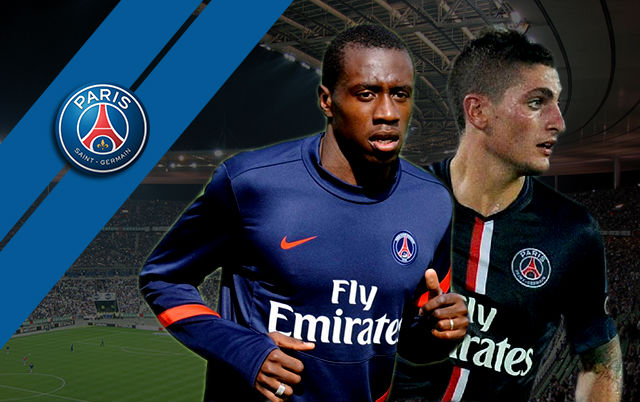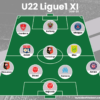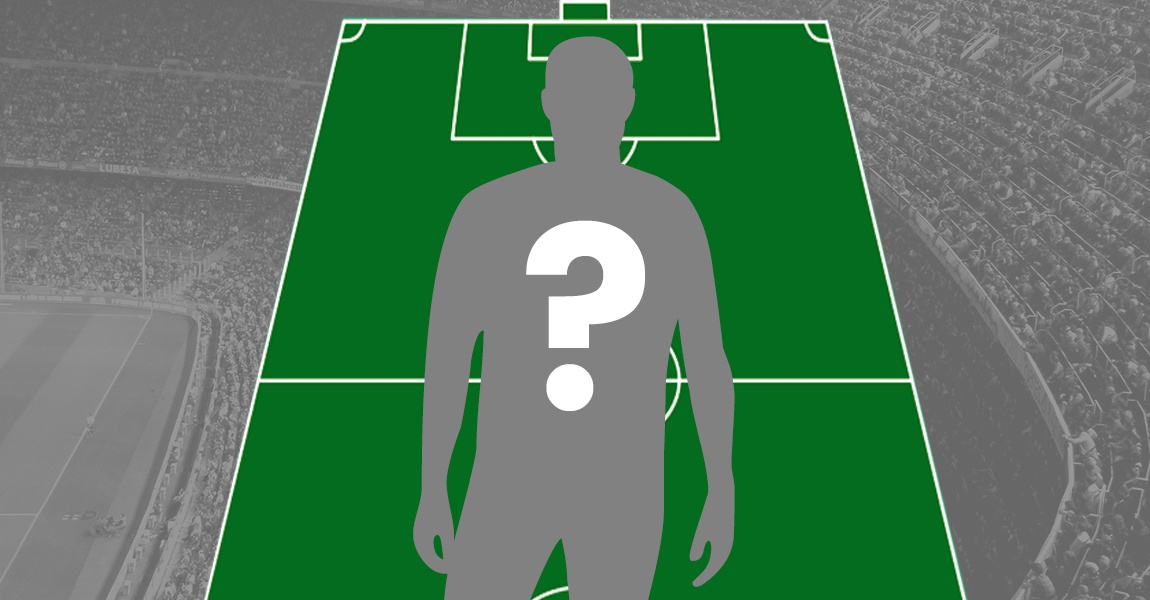A lot of the top European teams are very powerful across the middle of the park, but one of the very best in this respect, is PSG. The French champions boast of tremendous strength in depth in the middle of the pitch. Dayann C looks at the different options available to them in greater detail.
PSG go into the new season with six senior midfielders, on the basis that the likes of Lucas Moura and Ezequiel Lavezzi are considered attackers. With each player offering various skills and traits to the team, below is a brief breakdown of the players that can and will feature in the middle of the park for Les Parisiens this coming season.
Blaise Matuidi
The term engine room is applicable no more so than with Blaise Matuidi; playing with a seemingly infinite reserve of energy, Matuidi is arguably the second most important player in the PSG team, behind the emblematic Zlatan Ibrahimovic. Especially during the last two seasons, Matuidi has become an integral part of the midfield for PSG, recently as part of a trio under Laurent Blanc. His tireless work at both ends of the pitch make him a highly valuable asset to the team and the maintenance of a high level of play throughout the 90 minutes makes him a very reliable component of the midfield. Signing for his childhood club in 2011, Matuidi has established himself as a regular in both the club and national team setup.
Defensively, he is a potent tackler in midfield and has even slotted in at left back on occasion. But it is his box to box qualities that cement his position in the team; whilst the likes of Motta and Veratti like to play from deep, Matuidi is always a willing runner, often sighted on the left side of the opposition box and offering an attacking dimension from the midfield trio. He usually links up well with left sided players Maxwell and Lavezzi during attacks and scores his fair share of goals. In terms of completeness, he is probably the most affluent of the midfielders in the squad, contributing positively to both attack and defence, without looking out of place in those moments when the team decides on ball retention.
Marco Verratti
At the age of 21, Veratti has already established himself as a first class player and has begun to make waves in the Italian national team. His performances and style of play have caused some to draw parallels between him and the iconic Andrea Pirlo, quite an illustrious tag to give someone who is still eligible for his national under 21 team. Unlike Matuidi, who’s main attribute is his high workrate, Veratti is known for his great range of passing. Playing from a slightly deeper role in the midfield trio than Matuidi, Veratti does not make a lot of runs into the opposition box and is yet to score for the club, despite having been a main feature for the club over the past two seasons. But his passing ability, especially in tight spaces, makes him a mainstay in the squad, aiding Laurent Blanc’s chosen philosophy based of ball retention. Veratti can often be seen playing quick passes in dangerous defensive zones but more often than not, his ability to either beat a couple of players or to find a pass will salvage the situation, allowing PSG to spring a counterattack. Veratti links up well with Motta and Thiago Silva, both renowned passers themselves, and it allows PSG to dictate the tempo of the game. However, there are aspects of his game that are a slight cause for concern. Veratti is easily agitated and plays with a feistiness to his game.
Although he is a decent tackler, he’s far from perfect. But it is his reaction which is usually worse; a player inundated with yellow cards, Veratti is known to repeatedly argue with the referee in a vehement manner and it calls into question his temperament, an issue which the great Pirlo does not have. Furthermore, although there is no doubting his ability to hold onto the ball, which is especially remarkable considering his small frame, he invites a lot of pressure on himself at times. This was most notably clear in both legs of the 2012-13 Champions League tie against Chelsea in the quarter finals, where he was regularly pressed. He did exhibit his remarkable aptness in retaining the ball but his style of play is still a risk. Nonetheless, his ability is undeniable and he has only been in the professional game for a few short years, so there is room for improvement but his application so far has been admirable and his importance to the team’s success remains continuous.
Thiago Motta
The third main midfielder in the trifecta employed by Laurent Blanc last season, Thiago Motta plays the deepest role out of the three, regularly positioning himself in-between the two centre backs and commencing attacks. His insistence on playing as if he were a third centre back when in possession of the ball is vital to the strength of PSG’s attack as it allows the full backs, usually Maxwell and Van der Wiel, to play from practically on the touchline. The contribution of the full backs on the wings is aided by the somewhat more central runs of the wingers, Moura and Lavezzi, which allows space for the wide defenders to exploit. This is quite an abundant source of assists, with the full backs regularly involved in attacking phases of the game. This opportunity is enabled by Thiago Motta, who not only passes from a deep midfield role, but also provides sufficient defensive cover, giving rise to opportunistic runs from the wide defenders. Playing with such width when attacking stretches the opposition defence, allowing either gaps to open up in the middle or the option to deliver the ball in from the wide areas, hence Motta’s importance is apparent in triggering this. Motta’s range of passing isn’t usually that spectacular; he is more pragmatic, making simple passes and moving to space. Clichéd the concept may be, but Motta’s style of play is a strong representation of its advantages. Motta also brings an experience to the midfield which the others do not have.
Having played for big clubs such as Barcelona and Inter Milan and winning the Champions League with both, he brings a sense of tranquillity with his passing. His antics however are bolder and it exhibits the nous he has for the game; he can regularly be seen giving the referee a mouthful, imposing himself on the officials and the game as a whole. He also has the more detestable trait of diving/exaggerating when fouled but he is also astute. In the past, he has put off opposition penalty takers by chatting with them whilst they wait to take the penalty. More in the twilight of his career as opposed to the rest of the midfield, Motta still has a lot to give. Having previously cited playing for PSG a dream after having seen some Brazilian greats play for club (he was born in Brazil), he is widely trusted within the team and still remains a key element to the team’s success.
Yohan Cabaye
Cabaye didn’t get too much of an opportunity to shine after his move from Newcastle to PSG in January this year. But he is trusted by Blanc, who regularly played him in the French team during his stint as national team coach. The coming season will allow Cabaye to feature more often and will provide essential rotation in the midfield. Proficient in the deep lying midfielder role but also capable of making late runs into the box and converting for the team, his talents are perhaps a happy medium between Matuidi’s energetic running and the passing prowess of Veratti and Motta. He can also contribute defensively and will suit the preferred system of 4-3-3 of Laurent Blanc, acting as a like for like switch for one of the two ‘deeper’ midfielders. If he fares well this season, replicating the kind of form that won him plaudits in the Premier League, then there is every chance he can oust one of the midfielders for a starting spot or perhaps even dictate a change in formation to best utilise his talents.
From a fan’s perspective, increasing involvement from Cabaye should be a good thing and having had half a season to resettle in France, he is likely to become crucial to the cause as the season progresses. His track record for goalscoring with PSG so far has been relatively mute, but if he can recapture some of his Midas touch in front of goal from his Newcastle days (which included scoring the winner at Old Trafford), it will be a welcome partition of the goalscoring burden usually placed on Ibrahimovic and Cavani.
MORE READING
Q&A: All you need to know about PSG before the 2014/15 season
Adrien Rabiot
The youngest player in the midfield, Rabiot has done fantastically well to establish himself in the senior squad and hold his own in it. Rabiot has a mix of the talents displayed by the other more established midfielders in the squad. He has the ability to keep hold of possession and find a pass, much like Veratti, although not as diverse in his passing ability. But he also offers midfield runs much like Matuidi. A perfect example of this was late in last year’s Coupe de la Ligue tie against Bordeaux, where his willingness to run into the vacated space behind the defence allowed him to be found through on goal, where he duly slotted home.
Last season, his slim figure meant he wasn’t the strongest of players in midfield duels, but he’s returned in the new season having bulked up and if this aspect of his game can be improved, he will prove to be a very versatile midfielder. The worry from a PSG perspective is actually more off the field, with frequent revelations stirred up by the media and most notably his mother, also his agent, that he is set to leave the club, with the player refusing to sign contract extensions. Whether he decides to ply his trade elsewhere is a question to be answered in the future but he is currently under contract and his versatility will pose a dilemma to Blanc’s midfield selection. Detailed Scout Report on Rabiot here.
Javier Pastore
Pastore is the epitome of inconsistency, probably on the whole European football scene. Abundantly talented, Pastore’s mercurial performances, over the last two seasons specifically, often result in the Argentine cutting a frustrated figure, a sentiment shared by the fans. But from time to time, Pastore can produce the sublime and the near unfathomable, with creative passes, skills and dazzling dribbles. His more successful episodes demonstrate his ability, with flair that can even be likened to former player Ronaldhino. Last season was an accurate representation of this diagnosis, with relatively poor performances coupled with moments of magic such as against Bordeaux in the Coupe de la Ligue and that goal against Chelsea in the Champions League. Pastore leaves an indelible mark on any game in which he truly turns up but he has not hit the consistency he had during the first season at the club, when he was the main focal point in the club’s attack.
Subsequent signings with bigger reputations saw a decline in his ascendancy and he became more of a peripheral figure. He still, however, has many years ahead of him in the sport and the glimpses of talent he shows us indicate what can be conjured up. Pre-season saw some good performances from him, with more impetus from the player to impose himself in all aspects of the game. Perhaps, he can rekindle his form and truly provide competition within the squad as an attacking midfielder. It would be a real loss not just for PSG fans but the wider footballing community for a player of such talent to fall by the wayside because with his moments of magic, he can leave everyone awestruck; the late solo goal against Chelsea last year is indicative of that, not to forget he has scored away at Barcelona.
So that’s a brief roundup of the six senior midfielders who feature in the PSG squad and with Cavani voicing his dismay at being played out of position last season, it will be interesting to see the composition of the squad throughout season, especially in midfield, with Blanc most likely to vary his formation more often than last year.
Written by Dayann C. Follow him on Twitter @TheChinPresents
You can read all our 2014/15 Tactical Previews, and all articles in our This is Paris PSG blog
and International football. He also follows AS Roma quite closely. In the past,
his most notable writing work consists of an extended world cup preview
blog.
- The Impact of Refereeing Decisions and Need for Technology - July 22, 2017
- Why Didier Deschamps is still the man to lead the French national team - January 27, 2017
- PSG: Decline, Survival, and Revival - August 17, 2016


























































